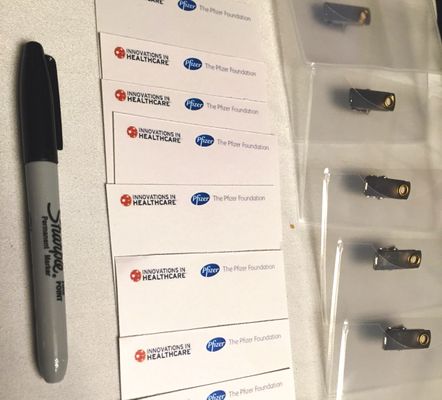Innovations in Healthcare coordinated two healthcare funding workshops and receptions in September with our innovator network in Mumbai and Nairobi to talk about the right type of financing needed to nurture innovative approaches to healthcare delivery.
Thanks to sponsorship by Pfizer Foundation and facilitation partnership by Intellecap (Mumbai) and Open Capital Advisors (Nairobi), both conversations yielded incredibly rich information about how to fundraise for social enterprises in healthcare and improve access to quality healthcare for underserved populations.
Our research team will be summarizing these discussions in a future report, but in the meantime, here is a quick summary of our high level findings.
Commonalities: Mission Drift & Balancing Grants and Investment
In both Kenya and India we found that non-profits are struggling with the issue of “mission drift.” Many find that it can be difficult to retain an organization’s core focus while also chasing funding and keeping a positive cash flow. An organization might be waiting on ten different grant applications, each with different expectations and some funders wanting an organization to start activities before providing funds.
Many grant funders cited the importance of networks or intermediaries to act as advocates for innovators and help broker the potential for more successful partnerships. Large funders look to organizations like Innovations in Healthcare to help curate the best fitting organizations for funder strategies.
Many of the for-profit organizations in both countries discussed the challenge of balancing grant capital and investment. For organizations seeking to pilot or research new approaches or ideas, grant capital is often the right approach. But to get the grant funding, they need to set up a non-profit subsidiary. It can be confusing to structure these for-profit and non-profit entities in the right way. Funders want to know their grants are not merely subsidizing an investor and investors want to make sure an organization is not too reliant on grant funding.
Another concern in both countries was the pressure from Impact Investors to show both positive social results as well as financial returns. Lower financial returns and longer-time horizons for repayment are not that prevalent. These high financial expectations (16% interest rates on debt or a 20-40x return on equity) are often largely unattainable by social enterprises interested in serving low-income markets.
Key Differences in India
As discussed earlier, while several for-profit organizations are looking for grant capital to pilot or research new ideas, the availability of these grants in India does not exist to the extent it does in other regions. Individual donors may need to be specifically cultivated. But obtaining governmental permission to legally receive funds from these donors can be a long and onerous process.
As for-profit enterprises grow, they often scale by working with Indian government payers. While government payments help – especially in low-income settings – they also often mean a less reliable cash flow. Ultimately this unpredictable revenue can signal a risk to traditional investors, making it hard to work with the government as a client and raise commercial capital when organizations need it most.
Key Differences in East Africa
Most impact investors placing capital in East Africa have their headquarters in Europe or the US and investment committees do not physically reside in East Africa. Organizations cultivating investorsneed toequip their investment officers not only with every piece of information about their business but also all the relevant market data and context.
Social enterprises in East Africa often have less financial and operational rigor than many investors expect. What are considered common practices for entrepreneurs in East Africa can raise red flags for US and European investors. Building financial processes and strong audit documents are important in assuaging fears about investing in a new market.
What’s an innovator to do?
The discussions we held yielded a few practical take-away lessons for innovators raising capital:
- Consider hiring an advisory firm to help prepare your company for investment fundraising. These firms know what you need to prepare and what specific investors are looking for. (Open Capital Advisors in Nairobi offers deferred fees, so you pay the majority of the fee only if you raise the money.)
- It helps to participate in a network (like Innovations in Healthcare!) that can advocate on your behalf and knows your work well to help with funder connections.
- Connect with peer entrepreneurs when evaluating potential investors to assess the fit and ease of working with different organizations.
- Remember that revenue is the cheapest form of capital. At the end of the day, customer revenue may be all you need!
Our Global Health Investment Landscape Research conducted last year, demonstrated a need for investors, grant funders and government to work together to co-finance companies and also to offer more innovator- friendly capital sources to truly fuel long- term growth. Putting this research into action, Innovations in Healthcare will continue to create opportunities for investors and innovators to meet and learn from each other.
We know that investment is a slow process. Banks and capital providers are not quick to lower their short-term return expectations and getting foundations and governments to align capital deployment does not happen overnight. But Innovations in Healthcare is excited by the response in the last week and the clear interest for more networking and small group dinners. We are extremely grateful to the Pfizer Foundation for supporting this work.

